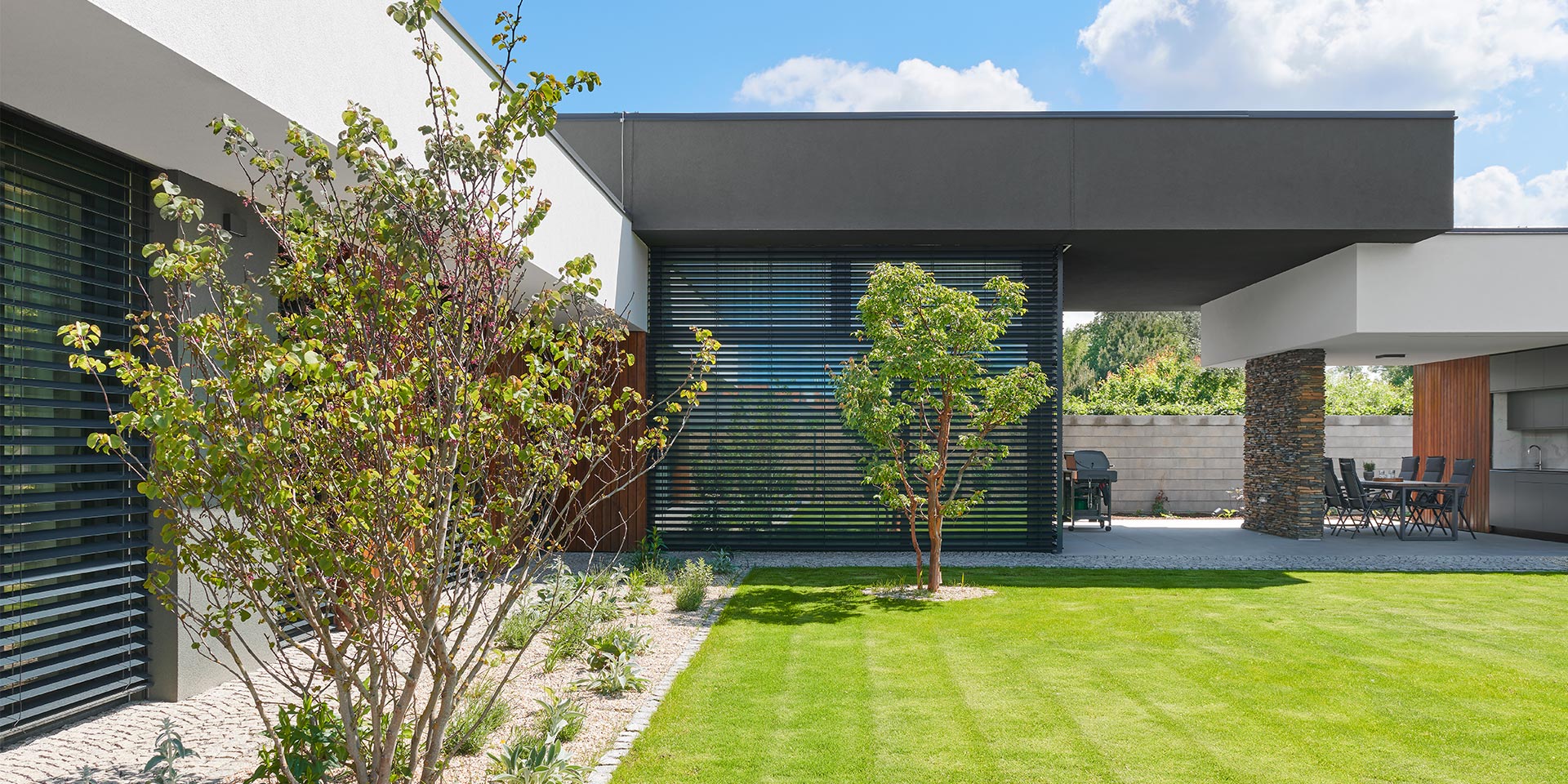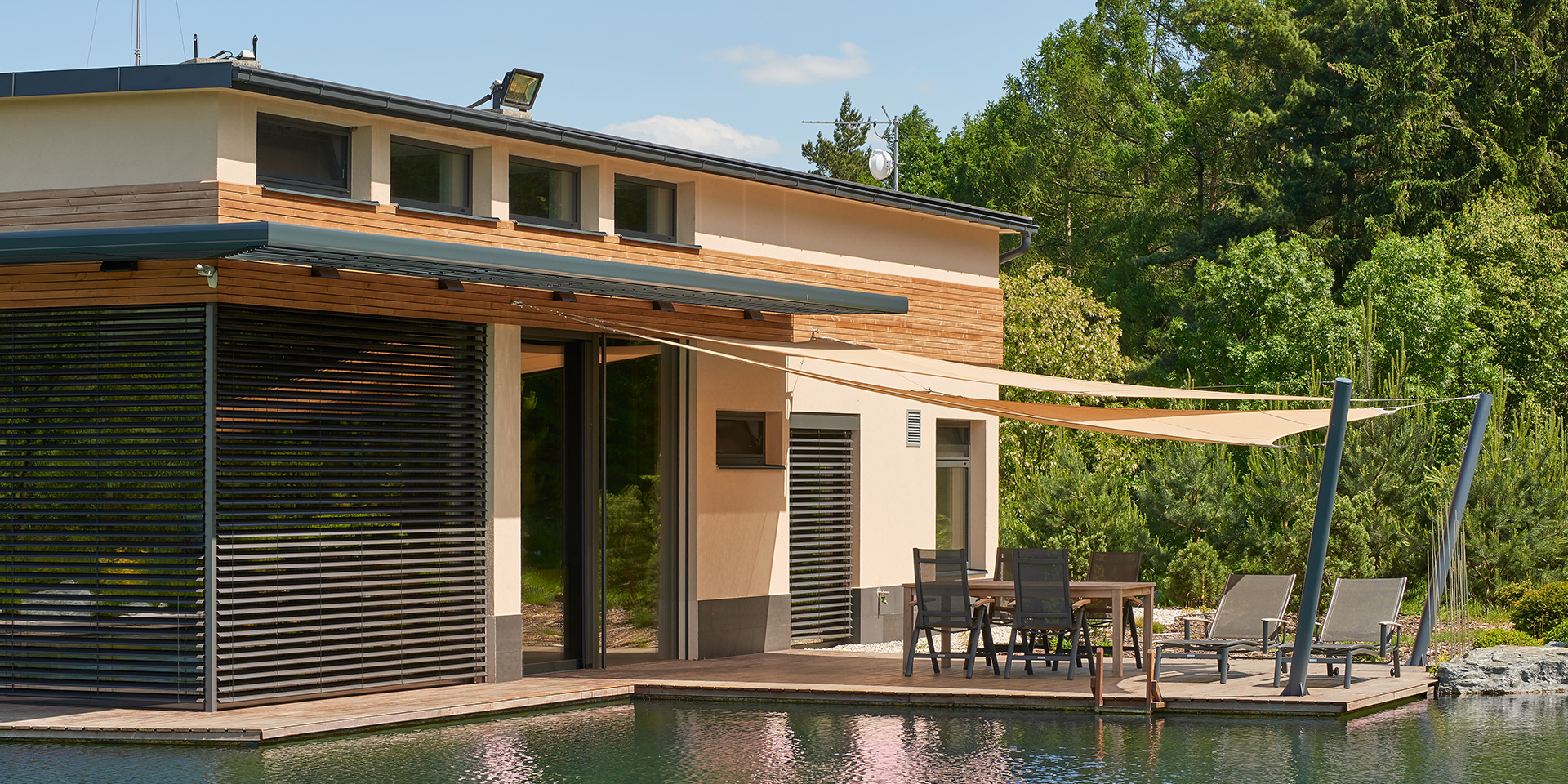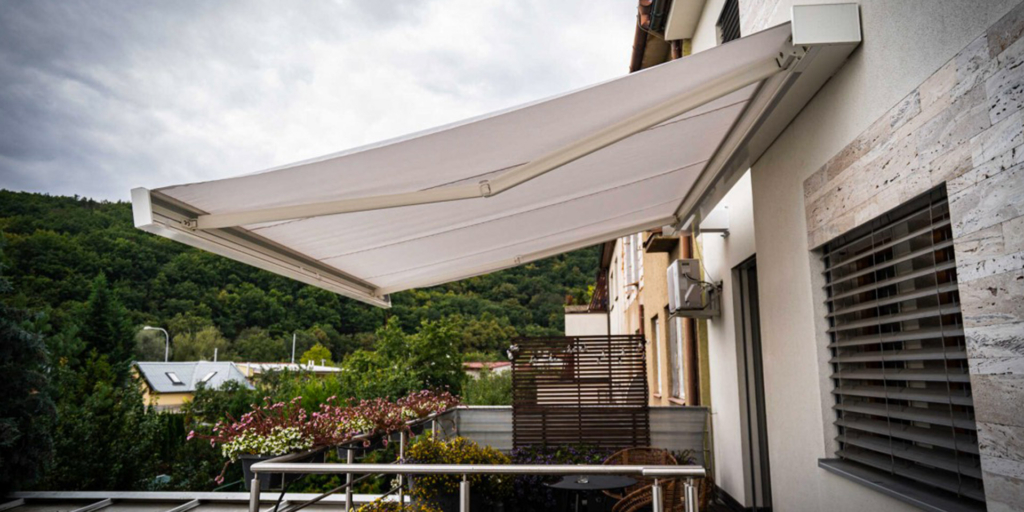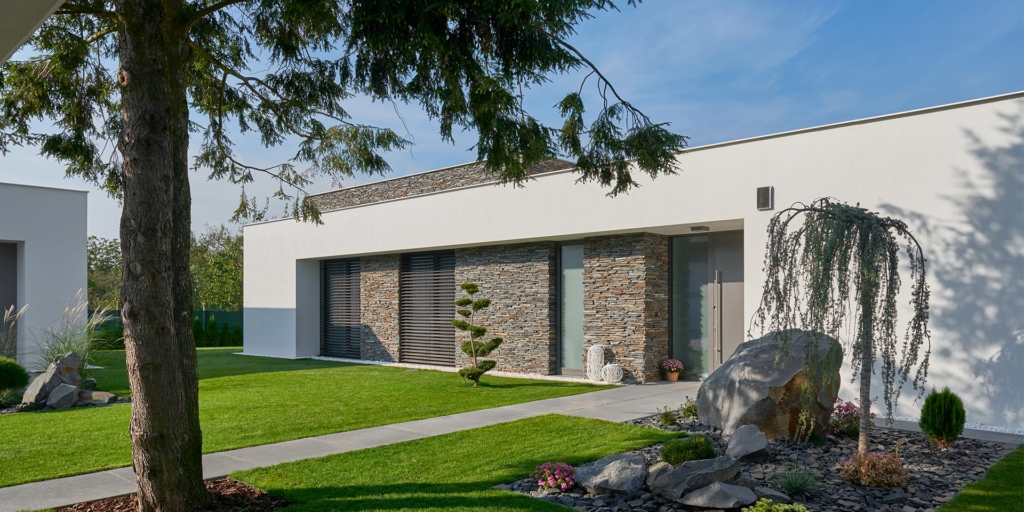How to shade a terrace
A shaded terrace protects you from strong sunshine, rain, wind and provides you with privacy. The most popular solutions include awnings, pergolas, sun sails, textile screens or plants such as ivy or Virginia creeper. Which one should you choose?

Type of shading for a terrace

Basic shading: sunshade and canvas
The simplest ways of shading include parasols/sunshades or sun sails. A parasol/sunshade is the most affordable option and is easy to carry. Its disadvantage is low resistance to wind. A sun sail is more resistant, it can cover a much larger area and advanced models are controlled by a motor.
Awnings: the simplest shading solution
Besides telescopic awnings, you may also encounter terrace awnings , which also include a steel structure. The main benefit of awnings is good shading and a broad range of colours and patterns.
There are also side awnings, which provide privacy and protection from wind.


Natural shading: plant trees, ivy or grapevine
Climbing plants on the terrace are one of the most beautiful and environmentally friendly solutions. Use grapevine, ivy or Virginia creeper. A green roof or wall will maintain a pleasant climate for you but you must take care of it – prune and water the plants, and clear fallen leaves.
In summer, blossoming trees will cool down the area next to the terrace and partly protect you from rain as well. Shrubs, in turn, give you privacy.
External textile screens: the most efficient side shading of a terrace
They provide sufficient privacy, shade and you can hide behind them from rain and wind. Textile screens are popular in particular, but you may also come across classic roller shutters made of aluminium or eco-friendly materials such as bamboo or reed.


